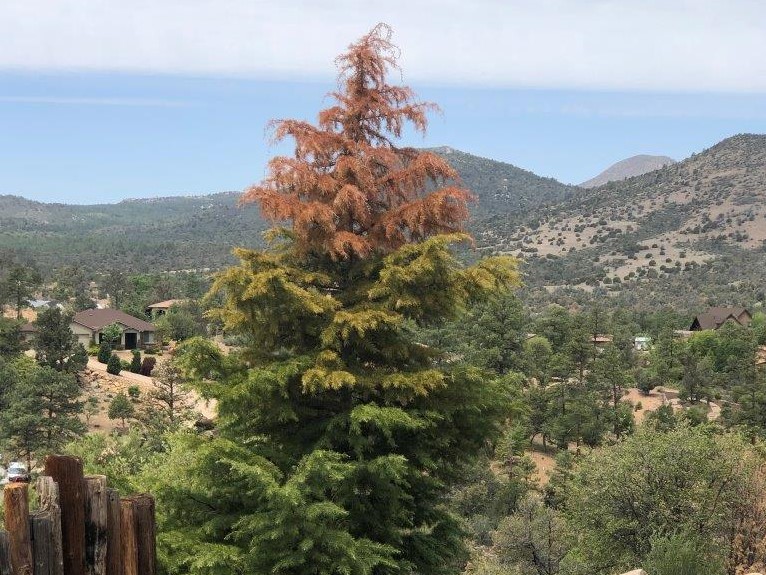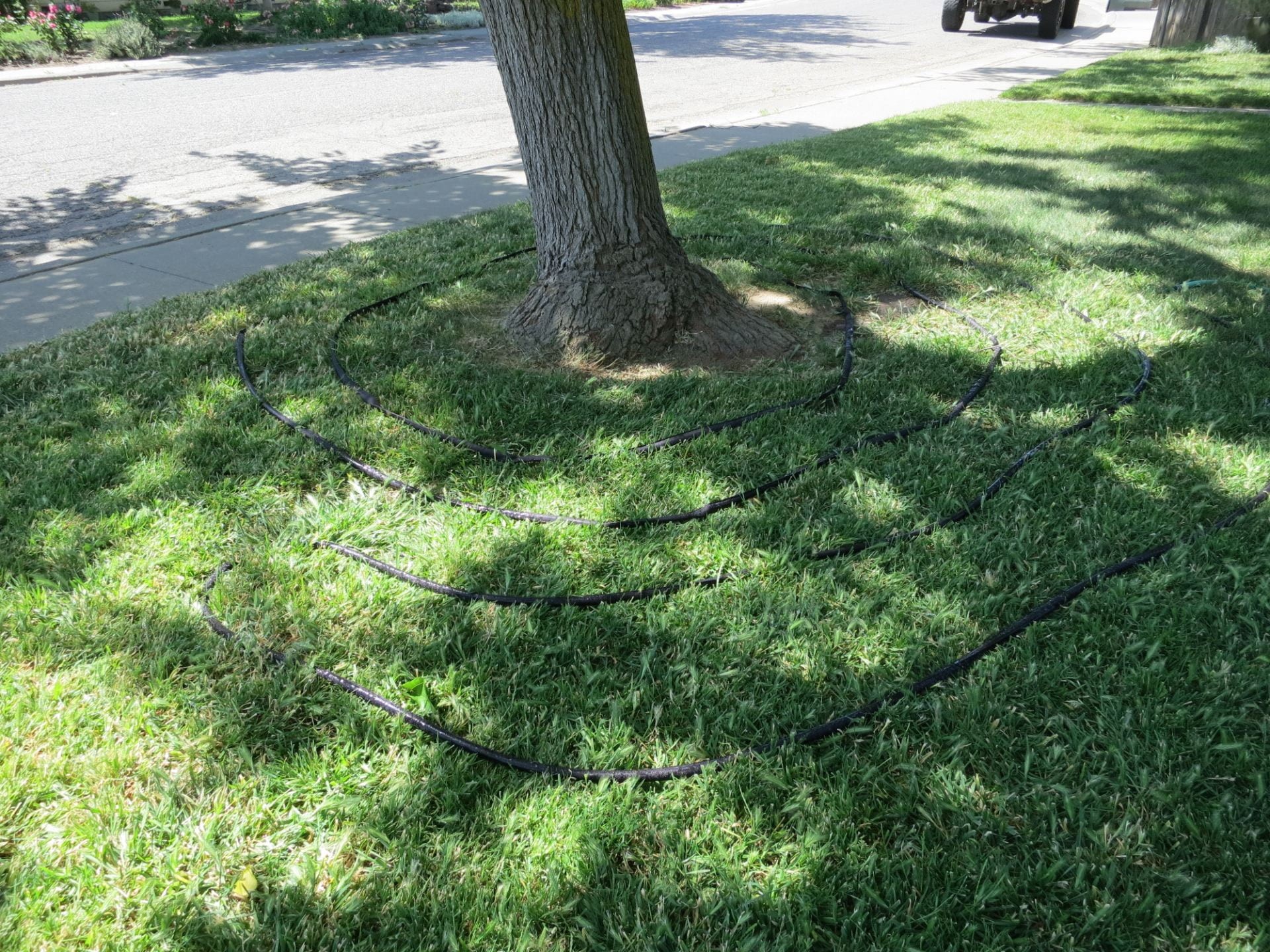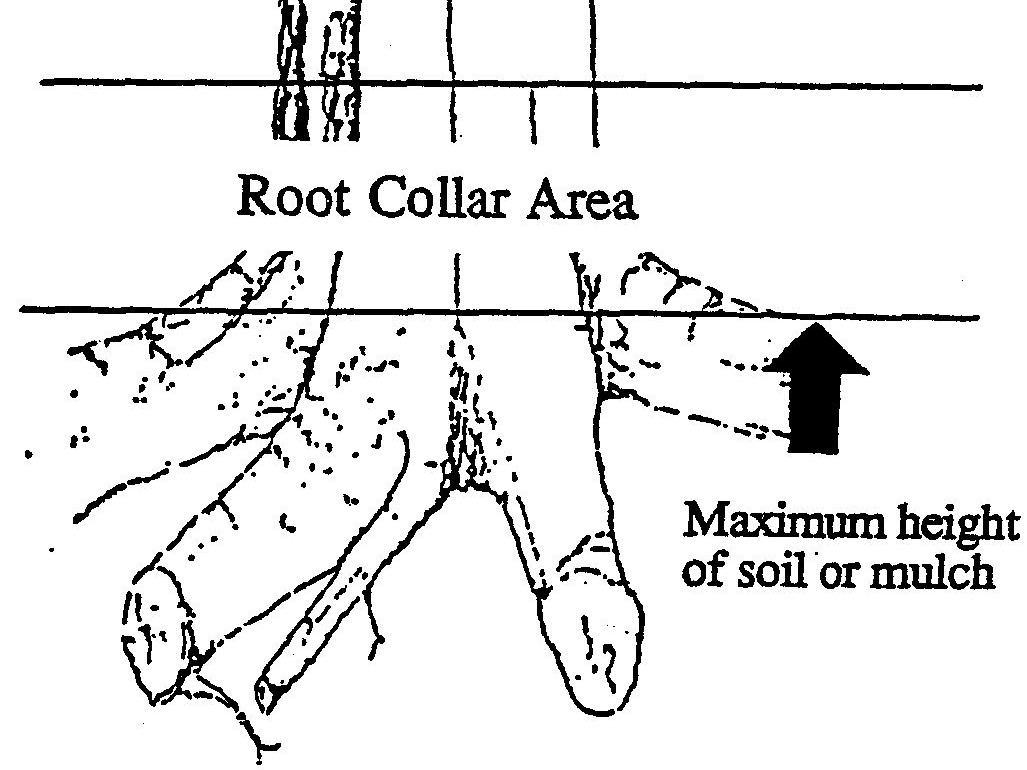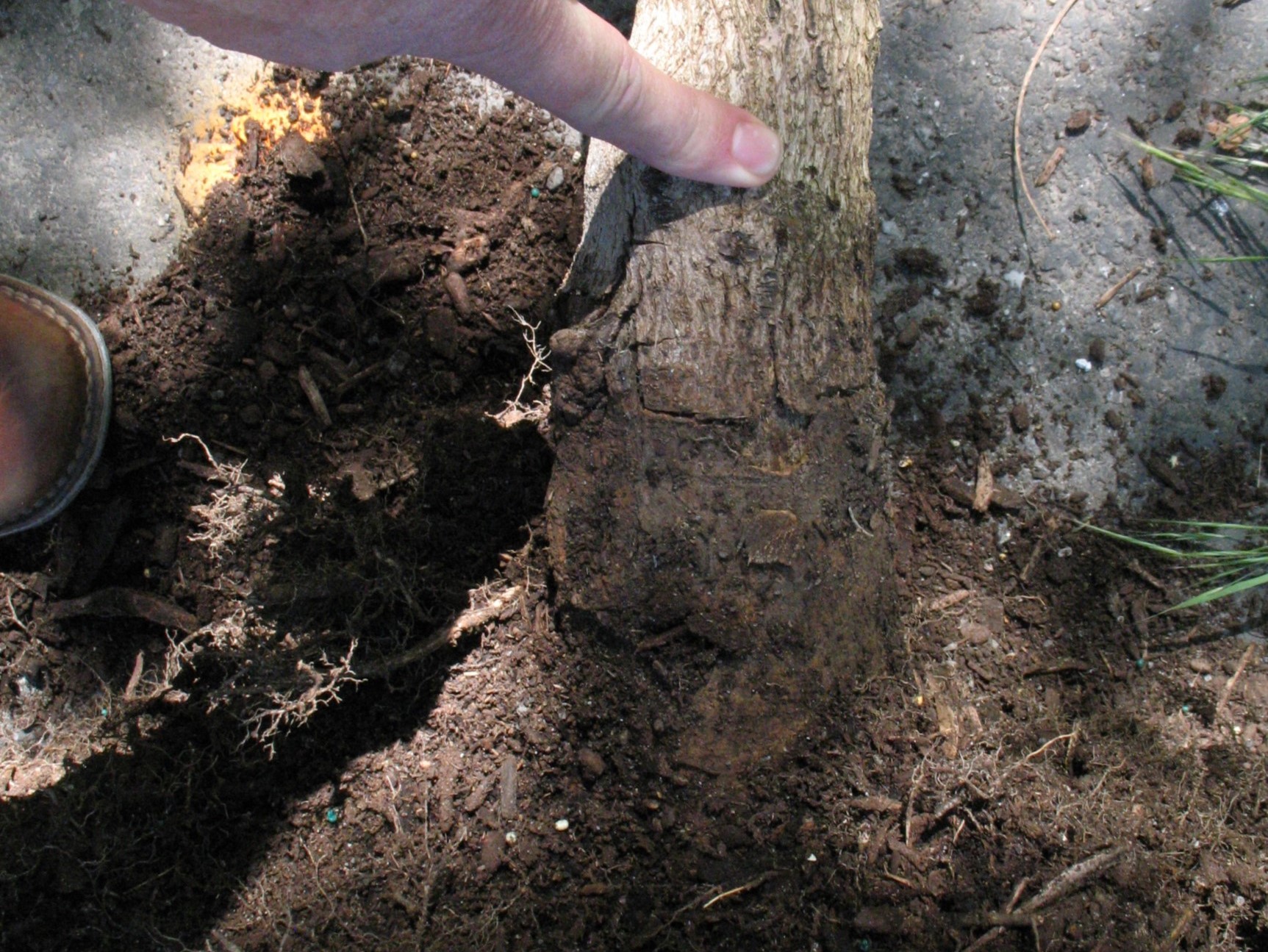 Drought Impacts Landscape Conifers - June 16, 2021 Jeff Schalau, Agent, Agriculture & Natural Resources University of Arizona Cooperative Extension, Yavapai County Our current drought has caused plant mortality in native ecosystems and in cultivated landscapes. Recently, our Master Gardener Help Desks have handled many calls regarding dead and dying conifers in planted landscapes. Many calls were reporting deodar cedars having dead tops. On other conifers, the decline was visible on a larger portion of the canopy. Others were completely dead. These symptoms could have been caused by a range of issues, but when coupled with absent or inadequate irrigation, a hot, gravel-mulched areas, lack of precipitation, and higher than average temperatures, the simple answer is “lack of proper irrigation”. Evergreen conifers require some moisture year-round. Those green leaves are conducting photosynthesis every day. Photosynthesis requires water. Given the drought conditions Arizona has experienced over the last year, proper, timely irrigation is required – especially in planted landscapes. I’m not talking about two drip emitters at the base of each tree which dispense a couple of gallons every few days. Much more irrigation is required to support all those leaves. In addition, the irrigation requirement for each tree increases as it grows. In the cool season, evergreen trees will benefit from monthly, deep irrigation to a depth of 18-24 inches. The frequency should be increased to every other week (or more) during the warm season. Sandy soils require a lower volume of water, but a greater irrigation frequency. Conversely, clay soils hold a greater volume of water and may get by with less frequent irrigation. This irrigation should be applied from the trunk outward to the dripline (vertical projection of the canopy). The easiest way to provide supplemental irrigation to a landscape tree is to coil soaker hoses starting a few feet from the trunk outward to the tree’s dripline. Monitor the irrigation depth using an irrigation probe (a smooth steel rod with a rounded tip). Continue to apply irrigation to a soil depth of 12-18 inches. The probe will encounter rocks, but through trial and error you can usually get an idea of the irrigation depth. After you have done this a couple of times, you will know about how long the process takes. This irrigation process should be intentional, and each irrigator should also consider water conservation. It probably does not make sense to irrigate every tree on your property. Focus on irrigating the most important trees in your landscape. If you are irrigating your coniferous trees, but they are still in decline, this can be related to poor drainage or improper planting. To check drainage, dig a 1 ft deep hole at the planting location, fill it with water, allow that water to percolate and fill it again and monitor the time needed to completely drain. If it takes longer than 24 hours, this indicates poor drainage. Again, the irrigation probe helps diagnose this issue. Improper planting can occur when the planting hole is too deep and/or if organic amendment was added to the backfill. Trees should be planted in a hole only as deep as the root ball (but 3-5 times wider) and no organic amendments should be added to the backfill. When amendments are used and the backfill settles, the root ball can sink lower than the surrounding soil. When this occurs, soil can move via gravity and begin to accumulate against the base of the tree’s trunk. The aboveground portion of the tree’s bark is not able to tolerate having moist soil against it and fungal rot organisms can eventually invade and kill the tree. Temperate conifers are very sensitive to this condition. If it has been buried as little as 1 or 2 inches, this problem can occur. To diagnose this issue, dig the soil away from the trunk and look for the root flare (a widening of the trunk). Remove the soil to expose the root flare and pull the soil away such that the root flare is exposed. You may also need to change the grade to prevent recurrence. When assessing problems such as those described above, you may be able to save the tree. Dead tops should be removed and often a nearby side branch will replace the main leader. If a tree dies, remove it and replant using proper, science-based techniques. See the links below describing tree irrigation practices and tree planting. You can follow the Backyard Gardener on Twitter – use the link on the BYG website. If you have other gardening questions, email the Master Gardener Help Desk in Prescott (prescottmg@gmail.com) or Camp Verde (verdevalleymg@gmail.com) and be sure to include your name, location, and phone number. Find past Backyard Gardener columns or provide feedback at the Backyard Gardener web site: https://cals.arizona.edu/yavapai/anr/hort/byg/. Images  Deodar cedar (Cedrus deodara) with a dead top in Prescott, Arizona (Photo by Yavapai County Master Gardener Help Desk client).
Deodar cedar (Cedrus deodara) with a dead top in Prescott, Arizona (Photo by Yavapai County Master Gardener Help Desk client). Soaker hoses can be placed under the dripline of the tree (Photo K-State Extension).
Soaker hoses can be placed under the dripline of the tree (Photo K-State Extension). It is important not to bury the tree's root collar when planting.
It is important not to bury the tree's root collar when planting. Tree trunk damage can occur when the root collar has been buried (Photo Utah State University Forestry Extension).
Tree trunk damage can occur when the root collar has been buried (Photo Utah State University Forestry Extension).Additional Resources Watering Trees and Shrubs: Simple Techniques for Efficient Landscape Watering, University of Arizona Cooperative Extension extension.arizona.edu/sites/extension.arizona.edu/files/pubs/az1298-2017.pdf Planting Guidelines: Container Trees and Shrubs, University of Arizona Cooperative Extension extension.arizona.edu/sites/extension.arizona.edu/files/pubs/az1022.pdf Show Me Your Root Flare, Clemson University Horticulture Dept. www.clemson.edu/cafls/vincent/articles/show_me_your_root_flare.pdf |